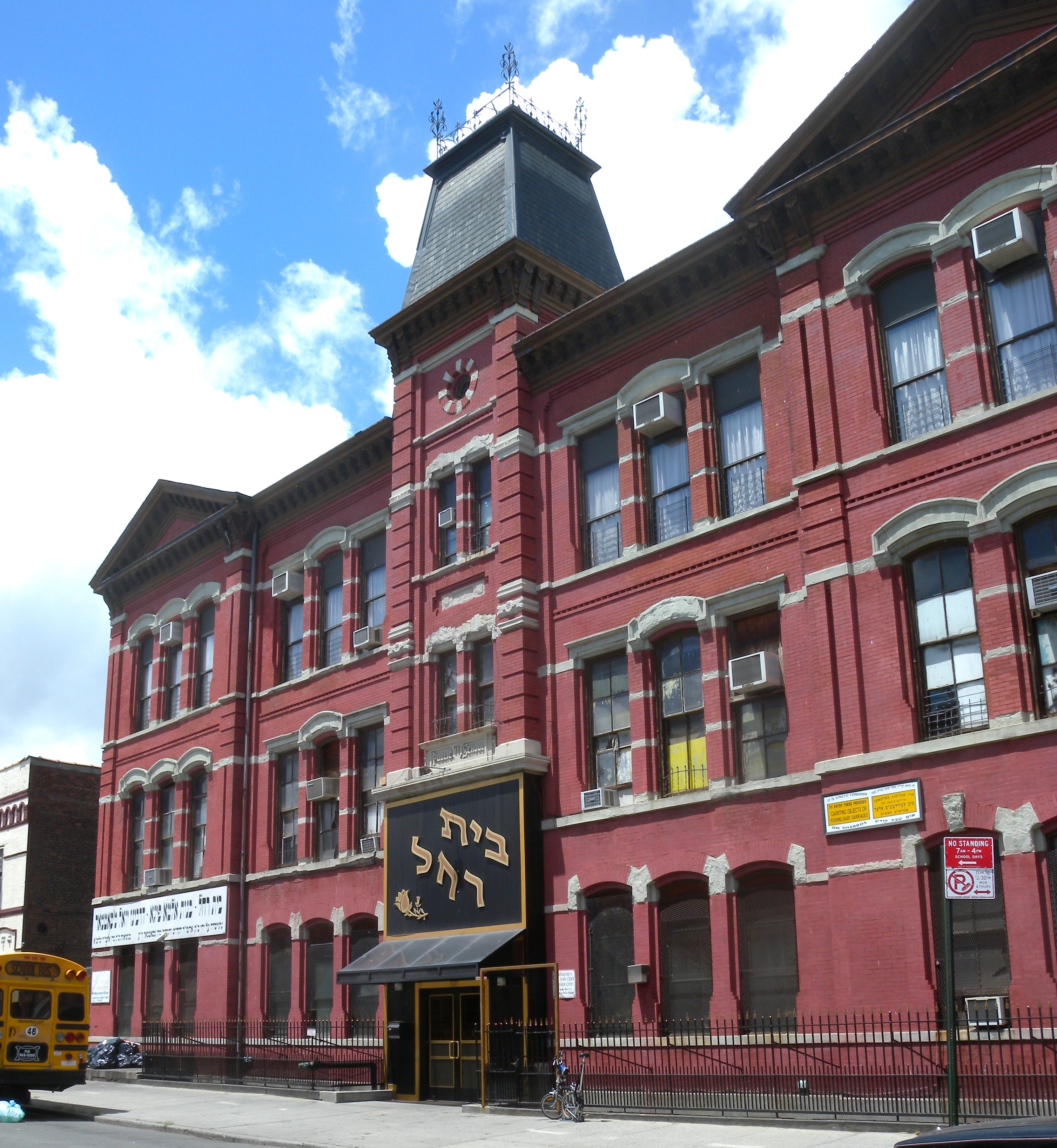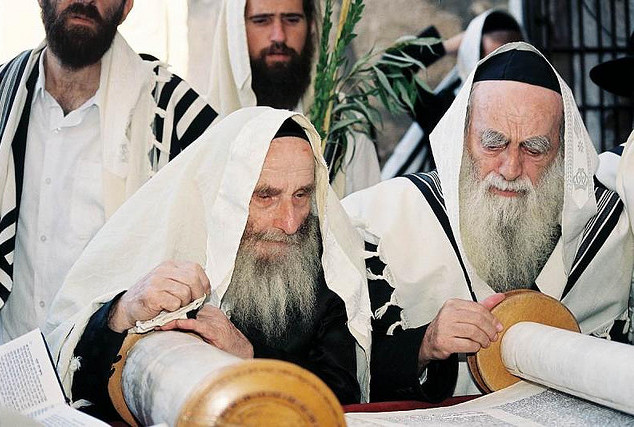|
Independent Education System (Israel)
The Independent Education System of Israel ( he, החינוך העצמאי - which is translated "independent education", and could be transliterated as ''Khinukh Atsmai'' or ''Chinuch Atzmai'') is an alternate school system run by, and serving the needs of, the Haredi Jewish (ultra-Orthodox Jewish) community of Israel. It was established in 1953 by a decision of the Moetzes Gedolei HaTorah ( Council of Torah Sages of Agudath Yisrael in Israel), and implemented through the ''State Education law''. It was initially led by Rabbi Zalman Sorotzkin, and now is run by an umbrella center that operates a large network of schools, kindergarten through high school, gender-separated, throughout the country. By 1978, there were 300 of these schools in Israel; by 2003, that number had grown to 800. Overview The diverse nature of Israel's society is accommodated within the framework of the Israeli education systems. Different sectors of the population attend different schools. Althoug ... [...More Info...] [...Related Items...] OR: [Wikipedia] [Google] [Baidu] |
Beis Yaakov
Bais Yaakov ( he, בית יעקב also Beis Yaakov, Beit Yaakov, Beth Jacob or Beys Yankev; lit., House fJacob) is a genericized name for full-time Haredi Jewish elementary and secondary schools for Jewish girls throughout the world. Bais Yaakov, started by Sarah Schenirer in post-World War I Kraków, was at the time a revolutionary approach to Jewish women's education. It has since achieved mainstream status within Orthodox Judaism, with branches located worldwide in every Jewish community with a significant population. While many of these schools carry the Bais Yaakov name, they are not necessarily affiliated, though they may be for other reasons. History The Bais Yaakov movement was started by seamstress Sarah Schenirer in 1917 in Kraków, Poland. The first school building survives as apartments, and is marked with a bronze plaque. While boys attended cheder and Talmud Torah schools (and in some cases yeshivas), at that time, there was no formalized system of Jewish e ... [...More Info...] [...Related Items...] OR: [Wikipedia] [Google] [Baidu] |
Orthodox Jewish Educational Institutions
Orthodox, Orthodoxy, or Orthodoxism may refer to: Religion * Orthodoxy, adherence to accepted norms, more specifically adherence to creeds, especially within Christianity and Judaism, but also less commonly in non-Abrahamic religions like Neo-paganism or Hinduism Christian Traditional Christian denominations * Eastern Orthodox Church, the world's second largest Christian church, that accepts seven Ecumenical Councils *Oriental Orthodox Churches, a Christian communion that accepts three Ecumenical Councils Modern denominations * True Orthodox Churches, also called Old Calendarists, a movement that separated from the mainstream Eastern Orthodox Church in the 1920s over issues of ecumenism and calendar reform * Reformed Orthodoxy (16th–18th century), a systematized, institutionalized and codified Reformed theology * Neo-orthodoxy, a theological position also known as ''dialectical theology'' * Paleo-orthodoxy, (20th–21st century), a movement in the United States focusing on ... [...More Info...] [...Related Items...] OR: [Wikipedia] [Google] [Baidu] |
Immanuel (town)
Immanuel, ( he, עִמָּנוּאֵל, IPA: i.maˌnuˈel) also spelled Emmanuel or Emanuel, is an Israeli settlement organized as a local council located in the West Bank. Immanuel was established in 1983. In it had a population of ; its jurisdiction is spread out over 2,750 dunams (2.75 km²). The international community considers Immanuel along with all other Israeli settlements in the West Bank illegal under international law, but the Israeli government disputes this. History According to ARIJ, in order to construct Immanuel, Israel confiscated land from two nearby Palestinian villages; * 951 dunams of land were taken from Deir Istiya,Deir Istiya Town Profile ARIJ, p. 18 *and 163 dunams of land were taken from |
Beit Yaakov
Bais Yaakov ( he, בית יעקב also Beis Yaakov, Beit Yaakov, Beth Jacob or Beys Yankev; lit., House fJacob) is a genericized name for full-time Haredi Jewish elementary and secondary schools for Jewish girls throughout the world. Bais Yaakov, started by Sarah Schenirer in post-World War I Kraków, was at the time a revolutionary approach to Jewish women's education. It has since achieved mainstream status within Orthodox Judaism, with branches located worldwide in every Jewish community with a significant population. While many of these schools carry the Bais Yaakov name, they are not necessarily affiliated, though they may be for other reasons. History The Bais Yaakov movement was started by seamstress Sarah Schenirer in 1917 in Kraków, Poland. The first school building survives as apartments, and is marked with a bronze plaque. While boys attended cheder and Talmud Torah schools (and in some cases yeshivas), at that time, there was no formalized system of Jewish edu ... [...More Info...] [...Related Items...] OR: [Wikipedia] [Google] [Baidu] |
Immanuel Beit Yaakov Controversy
The Immanuel Beit Yaakov controversy concerns the founding of a Hasidic girls' school in the Israeli settlement of Immanuel in September 2007. The Hasidic school was founded and attended by members of both the Sephardi and Ashkenazi communities, with Rav Shimon Ba'adani as final Rabbinic authority. The Hasidic school was sued by Yoav Lallum, who does not reside in Immanuel, and his group "Noar KeHalacha", with assistance from the New Israel Fund and the "Tmura" and "Achoti" organizations; the allegation—that this was solely an ethnic split between Sephardim and Ashkenazim. Rabbi Shimon Baadani, is the spiritual leader of the Yemenite community in Emanuel, all of whose daughters study the Hassidic class at 2010, most of whom are of Ashkenazi descent. In a 2009 Israeli Supreme Court ruling, a claim was accepted regarding separation on the basis of origin between Mizrahi and Ashkenazi students at the Beit Yaakov girls' elementary school in Emanuel. Mizrahi students who studied wi ... [...More Info...] [...Related Items...] OR: [Wikipedia] [Google] [Baidu] |
Aharon Kotler
Aharon Kotler (1892–1962) was an Orthodox Jewish rabbi and a prominent leader of Orthodox Judaism in Lithuania and the United States; the latter being where he founded Beth Medrash Govoha in Lakewood Township, New Jersey. Early life Kotler was born Aharon Pines in Śvisłač, Russian Empire (historically Lithuania, now Belarus) in 1891. He was orphaned at the age of 10 and adopted by his uncle, Rabbi Yitzchak Pines, a Dayan in Minsk. He studied in the Slabodka yeshiva in Lithuania under the "Alter (elder) of Slabodka", Rav Nosson Tzvi Finkel, and Rabbi Moshe Mordechai Epstein. Subsequently, he joined his father-in-law, Rabbi Isser Zalman Meltzer, to run the yeshiva of Slutsk. World War II and move to the United States After World War I, the yeshivah moved from Slutsk to Kletsk in Belarus. With the outbreak of World War II, Kotler and the yeshivah relocated to Vilna, then the major refuge of most ''yeshivoth'' from the occupied areas. The smaller Yeshivos followe ... [...More Info...] [...Related Items...] OR: [Wikipedia] [Google] [Baidu] |
Mesivta
''Mesivta'' (also metivta; Aramaic: מתיבתא, "academy") is an Orthodox Jewish yeshiva secondary school for boys. The term is commonly used in the United States to describe a yeshiva that emphasizes Talmudic studies for boys in grades 9 through 11 or 12; alternately, it refers to the religious studies track in a yeshiva high school that offers both religious and secular studies.Helmreich (2000), p. xii. The comparable term in Israel for the former is ''Yeshiva Ketana'' ( he, ישיבה קטנה, lit. "small yeshiva"), for the latter ''Yeshiva Tichonit'' (ישיבה תיכונית, "yeshiva high-school"). This article focuses on the US; see Chinuch Atzmai and Mamlachti dati for respective discussion of these Israeli institutions. After graduation from a mesivta, students progress to a beth midrash, or undergraduate-level, yeshiva program. In practice, yeshivas that call themselves ''mesivtas'' are usually a combination of ''mesivta'' (high-school) and ''beth medras ... [...More Info...] [...Related Items...] OR: [Wikipedia] [Google] [Baidu] |
Cheder
A ''cheder'' ( he, חדר, lit. "room"; Yiddish pronunciation ''kheyder'') is a traditional primary school teaching the basics of Judaism and the Hebrew language. History ''Cheders'' were widely found in Europe before the end of the 18th century. Lessons took place in the house of the teacher, known as a '' melamed'', whose wages were paid by the Jewish community or a group of parents. Normally, only boys would attend classes—girls were educated by their mothers in their homes. Where money was scarce and the community could not afford to maintain many teachers, boys of all ages would be taught in a single group. Although traditionally boys start learning the Hebrew alphabet the day they turned three, boys typically entered ''cheder'' school around the age of 5. After learning to read Hebrew, they would immediately begin studying the Torah, starting with the Book of Leviticus. They would usually start learning the Mishnah at around seven years of age and the Talmud (Mish ... [...More Info...] [...Related Items...] OR: [Wikipedia] [Google] [Baidu] |
Talmud Torah
Talmud Torah ( he, תלמוד תורה, lit. 'Study of the Torah') schools were created in the Jewish world, both Ashkenazic and Sephardic, as a form of religious school for boys of modest backgrounds, where they were given an elementary education in Hebrew, the scriptures (especially the Torah), and the Talmud (and ''halakha''). This was meant to prepare them for ''yeshiva'' or, particularly in the movement's modern form, for Jewish education at a high school level. The Talmud Torah was modeled after the '' cheder'', a traditional form of schooling whose essential elements it incorporated, with changes appropriate to its public form rather than the ''cheder's'' private financing through less formal or institutionalized mechanisms, including tuition fees and donations. In the United States, the term ''Talmud Torah'' refers to the afternoon program for boys and girls after attending public school. This form of Jewish education was prevalent from the mid–19th century through " ... [...More Info...] [...Related Items...] OR: [Wikipedia] [Google] [Baidu] |
Mamlachti Dati
Religious Zionism ( he, צִיּוֹנוּת דָּתִית, translit. ''Tziyonut Datit'') is an ideology that combines Zionism and Orthodox Judaism. Its adherents are also referred to as ''Dati Leumi'' ( "National Religious"), and in Israel, they are most commonly known by the plural form of the first part of that term Datiim ( "Religious"). The community is sometimes called ''Kippah seruga'', literally, "Knitted kippah", the typical head covering which is worn by Jewish men. Before the establishment of the State of Israel, most Religious Zionists were observant Jews who supported Zionist efforts to build a Jewish state in the Land of Israel. Religious Zionism revolves around three pillars: the Land of Israel, the People of Israel, and the Torah of Israel. The Hardal ( ''Ḥaredi Le'umi''; lit., "Nationalist Haredi") are a sub-community, stricter in its observance, and more statist in its politics. Those Religious Zionists, who are less strict in their observance but not nece ... [...More Info...] [...Related Items...] OR: [Wikipedia] [Google] [Baidu] |
Haredi Judaism
Haredi Judaism ( he, ', ; also spelled ''Charedi'' in English; plural ''Haredim'' or ''Charedim'') consists of groups within Orthodox Judaism that are characterized by their strict adherence to ''halakha'' (Jewish law) and traditions, in opposition to modern values and practices. Its members are usually referred to as ultra-Orthodox in English; however, the term "ultra-Orthodox" is considered pejorative by many of its adherents, who prefer terms like strictly Orthodox or Haredi. Haredi Jews regard themselves as the most religiously authentic group of Jews, although other movements of Judaism disagree. Some scholars have suggested that Haredi Judaism is a reaction to societal changes, including political emancipation, the ''Haskalah'' movement derived from the Enlightenment, acculturation, secularization, religious reform in all its forms from mild to extreme, the rise of the Jewish national movements, etc. In contrast to Modern Orthodox Judaism, followers of Haredi Judaism se ... [...More Info...] [...Related Items...] OR: [Wikipedia] [Google] [Baidu] |







